Yoga Blog
Nourish Your Flow: Foods to Enhance Flexibility for Your Yoga Practice
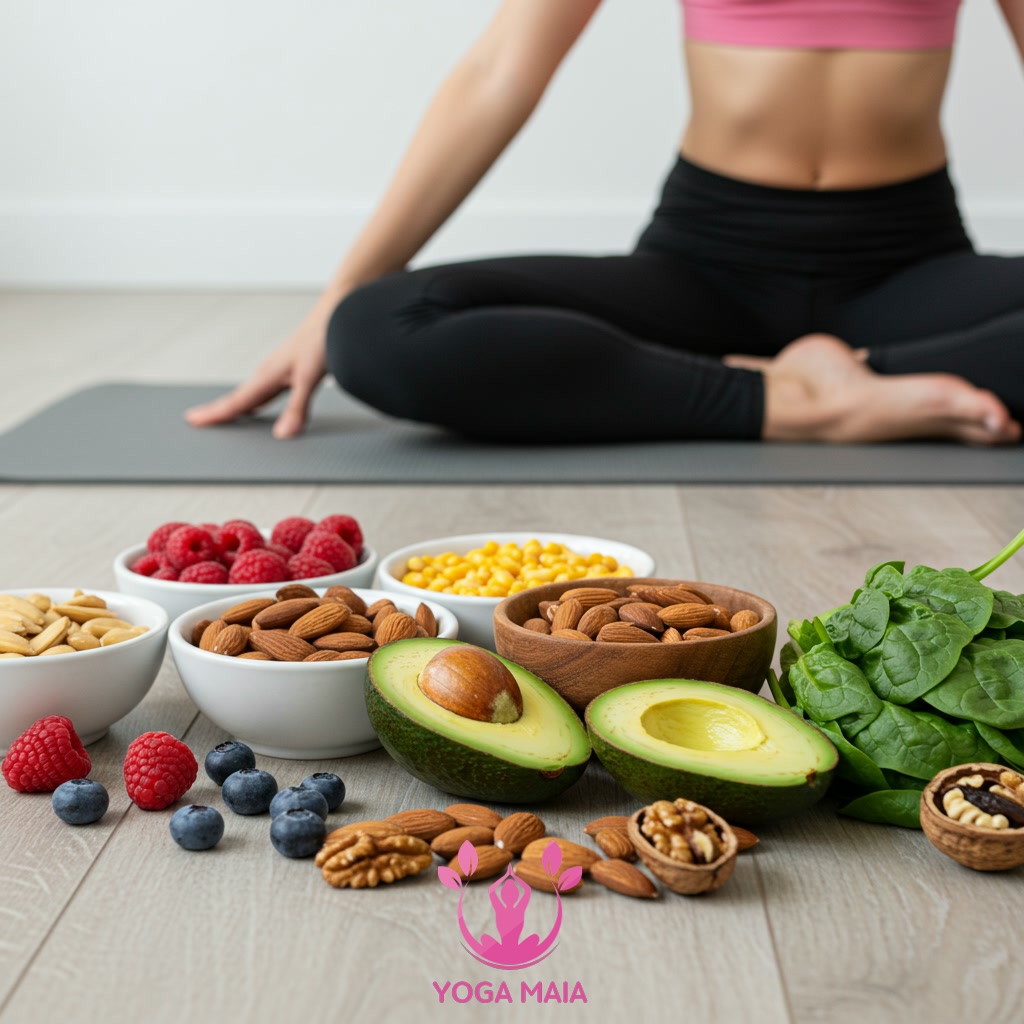
This content explores the link between nutrition and physical flexibility, specifically for enhancing your yoga practice. It identifies key foods known to support joint mobility and muscle suppleness. By incorporating these dietary recommendations, you can effectively nourish your body to improve your range of motion and deepen your yoga poses.
Table of Contents
- Section 1: Understanding the Connection: Diet, Flexibility, and Yoga
- Section 2: The Science Behind Food and Flexible Tissues
- Section 3: Key Nutrients and Food Groups for Enhanced Flexibility
- Section 4: Top Foods to Include in Your Yoga Diet
- Section 5: Foods and Habits That May Hinder Flexibility
- Section 6: Building Your Flexibility-Focused Meal Plan for Yoga
Section 1: Understanding the Connection: Diet, Flexibility, and Yoga
Understanding the connection between what you eat and your physical flexibility is a powerful step in enhancing your yoga practice. Flexibility isn’t solely about stretching muscles; it also depends on the health, hydration, and elasticity of your connective tissues, ligaments, and joints. The nutrients you consume provide the building blocks necessary for these tissues to remain supple, resilient, and capable of a full range of motion. Proper hydration, for instance, is crucial for lubricating joints and maintaining tissue elasticity. By focusing on a diet rich in anti-inflammatory foods and essential nutrients, you can directly support your body’s ability to move freely and deeply into yoga poses, creating a more fluid and comfortable practice.
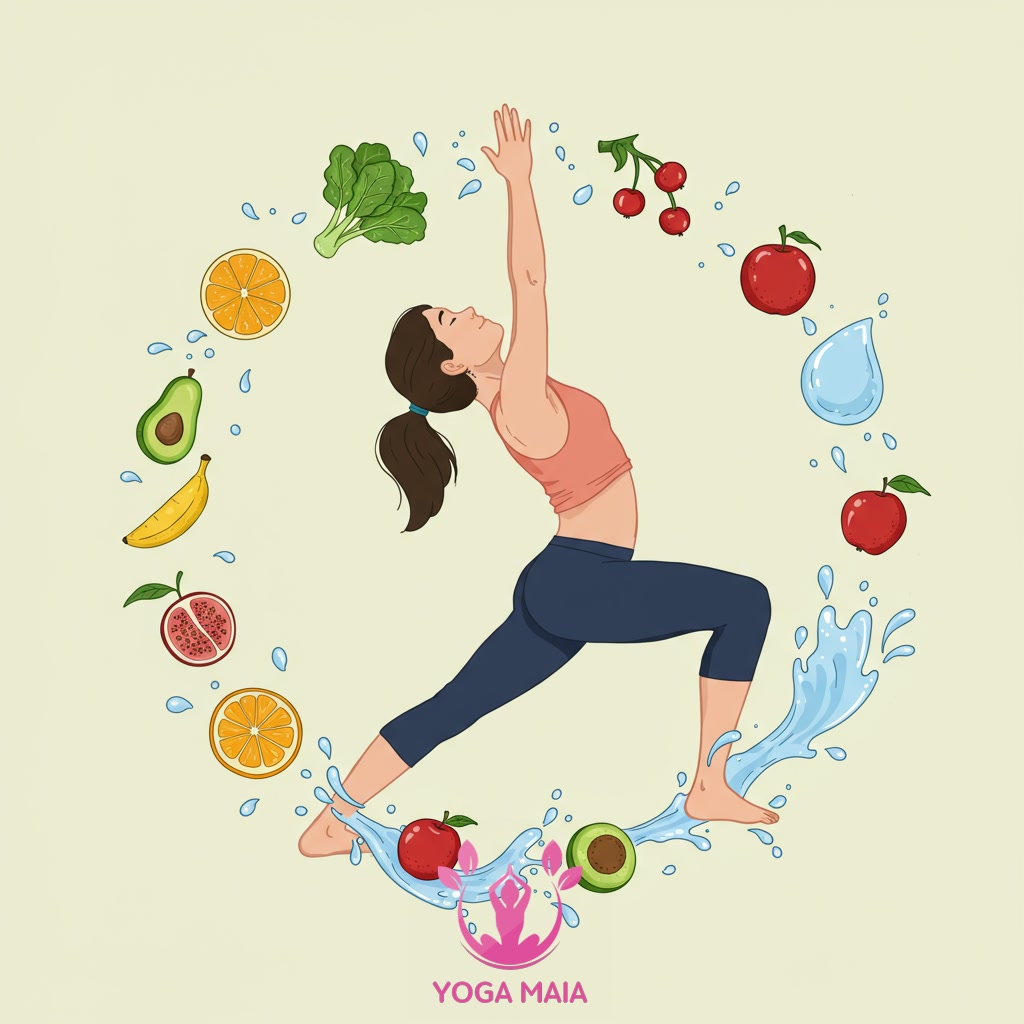 Understanding the Connection: Diet, Flexibility, and Yoga
Understanding the Connection: Diet, Flexibility, and Yoga
Section 2: The Science Behind Food and Flexible Tissues
Understanding the intricate relationship between your diet and the physical state of your tissues is crucial for deepening your yoga practice. Flexibility is significantly influenced by the health and hydration of your connective tissues, such as ligaments, tendons, and fascia, as well as the suppleness of your muscles. Nutrients play a vital role in maintaining these structures; for instance, adequate protein intake is essential for muscle repair and growth, while Vitamin C is a key cofactor in the synthesis of collagen, the primary protein in connective tissues. Proper hydration ensures that these tissues remain elastic and that joints are well-lubricated. Additionally, certain nutrients, like omega-3 fatty acids, can help reduce inflammation, which can otherwise lead to stiffness and limit your range of motion. By consciously fueling your body with the right foods, you provide the building blocks necessary for tissues that are more resilient, hydrated, and capable of greater flexibility, directly enhancing your ability to move freely and comfortably through yoga poses.
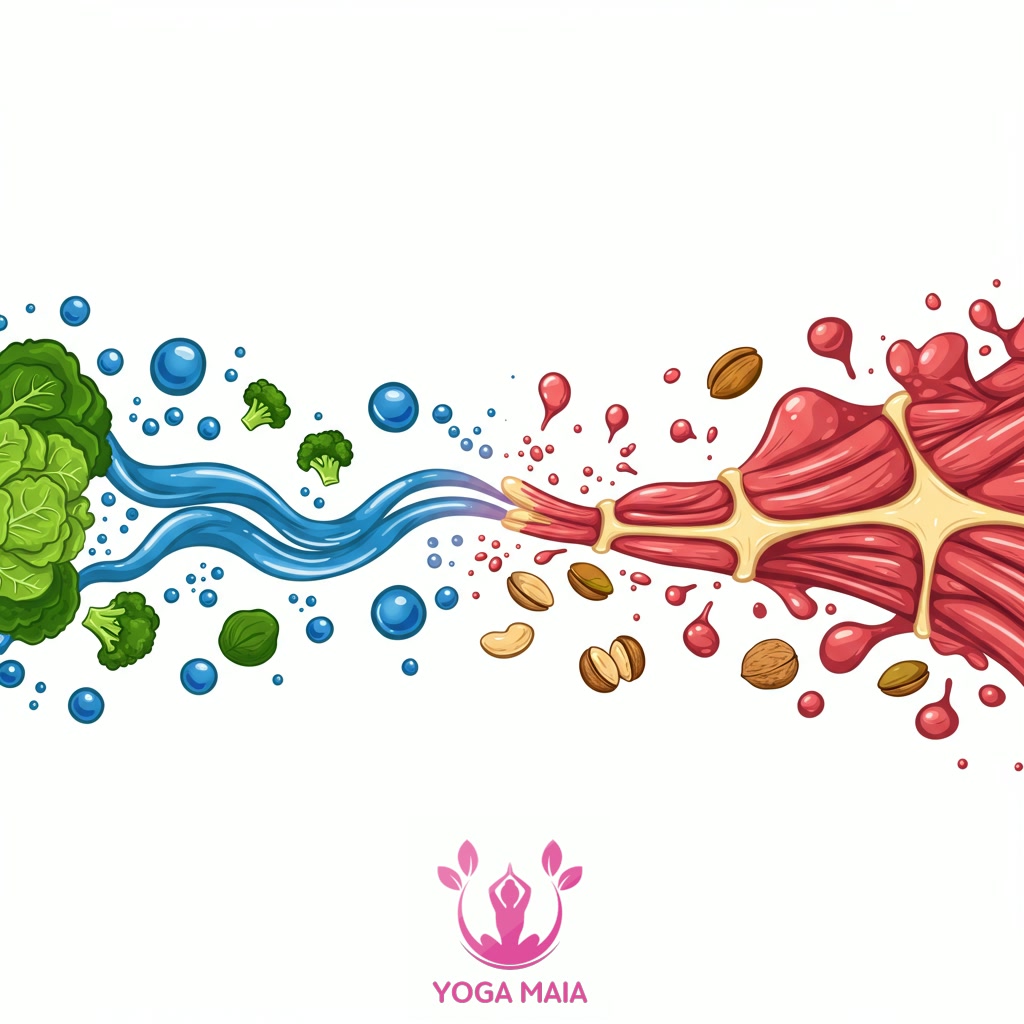 The Science Behind Food and Flexible Tissues
The Science Behind Food and Flexible Tissues
Section 3: Key Nutrients and Food Groups for Enhanced Flexibility
Building upon the understanding that diet impacts tissue health, specific nutrients and food groups are particularly beneficial for enhancing flexibility. Omega-3 fatty acids, found abundantly in fatty fish like salmon, flaxseeds, and walnuts, help reduce inflammation, which can stiffen muscles and joints. Antioxidant-rich foods, such as colorful fruits and leafy green vegetables, combat oxidative stress, supporting tissue repair and overall suppleness. Additionally, nutrients vital for collagen synthesis, like Vitamin C (found in citrus fruits and bell peppers), contribute to the health of connective tissues. Incorporating a balanced intake of these foods provides the body with the building blocks needed to maintain elastic muscles and mobile joints, thereby supporting deeper, more comfortable movement in your yoga practice.
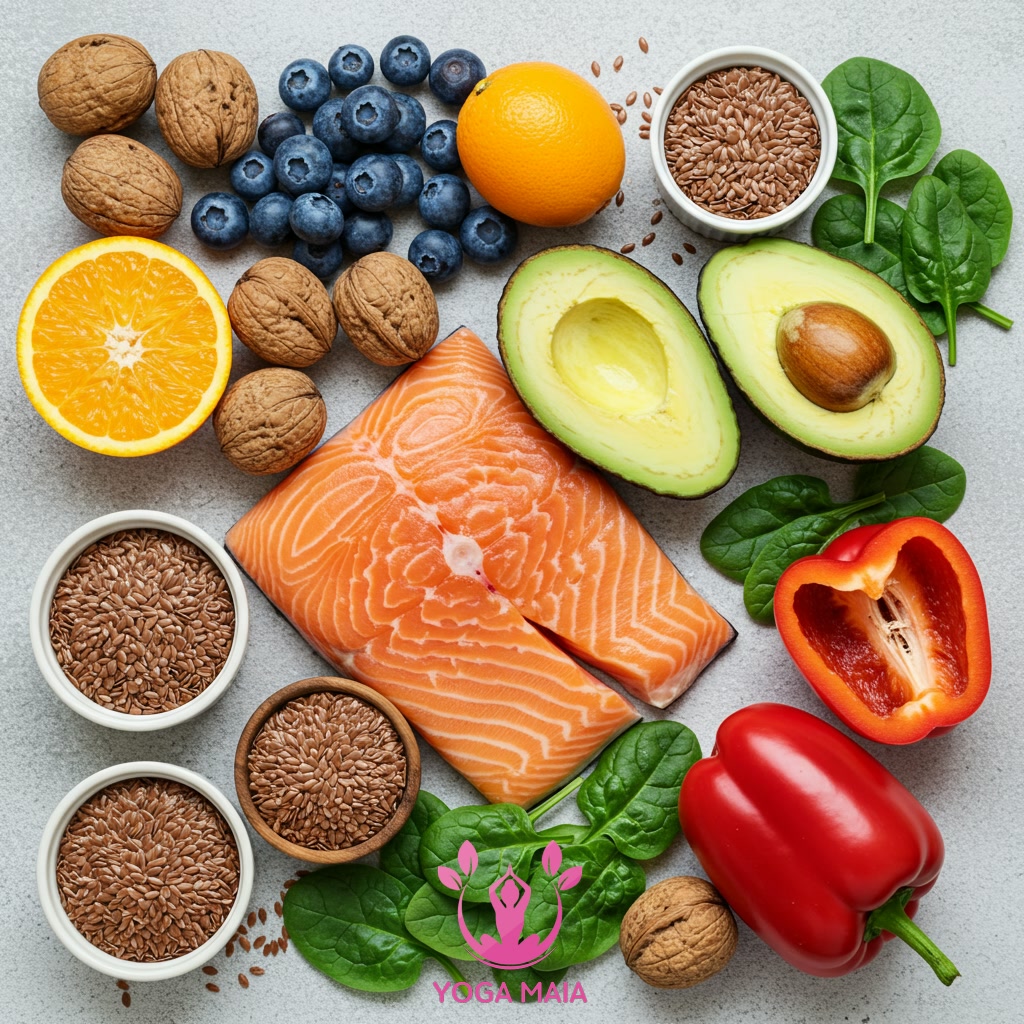 Key Nutrients and Food Groups for Enhanced Flexibility
Key Nutrients and Food Groups for Enhanced Flexibility
Section 4: Top Foods to Include in Your Yoga Diet
Building on the role of healthy fats, incorporating specific foods can significantly boost flexibility and support your yoga practice. Leafy greens like spinach and kale are nutritional powerhouses, rich in antioxidants and magnesium, which aids muscle relaxation. Berries, packed with Vitamin C, are crucial for collagen production, strengthening connective tissues. Fatty fish such as salmon, aligning with the benefits of Omega-3s, help reduce inflammation and improve joint health. Nuts and seeds, including almonds and chia seeds, provide essential healthy fats, fiber, and minerals vital for muscle function and overall tissue health. Remember, staying well-hydrated is also fundamental, keeping all your tissues supple and elastic. Including these nutrient-dense foods can effectively nourish your body for enhanced flexibility and a deeper connection in your poses.
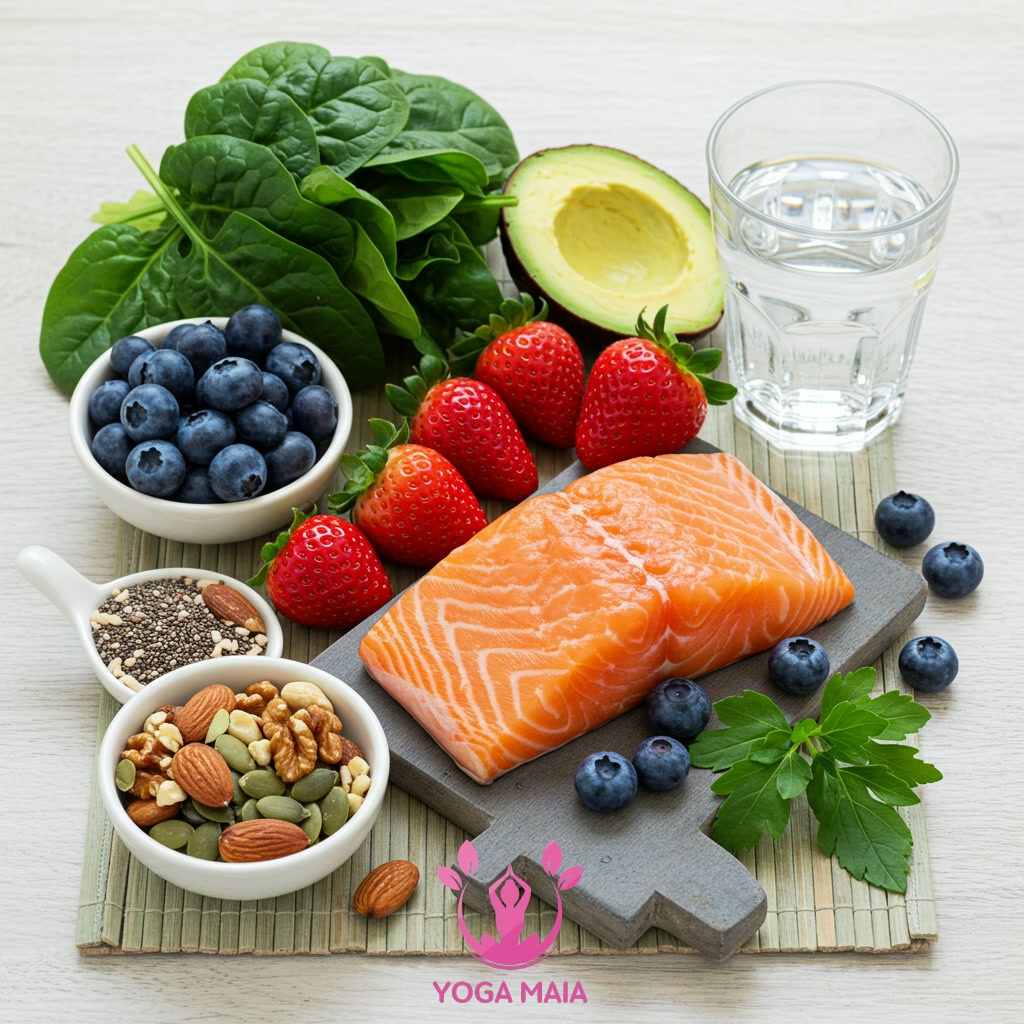 Top Foods to Include in Your Yoga Diet
Top Foods to Include in Your Yoga Diet
Section 5: Foods and Habits That May Hinder Flexibility
While focusing on foods that enhance flexibility is key, it’s equally important to be aware of dietary choices and habits that can impede your progress. Consuming excessive amounts of processed foods, refined sugars, and unhealthy saturated or trans fats can contribute to inflammation throughout the body. This inflammation can affect joints, muscles, and connective tissues, potentially leading to stiffness, reduced range of motion, and discomfort during yoga poses. Dehydration is another major factor; insufficient water intake makes tissues less pliable and more prone to injury. Furthermore, relying heavily on stimulants like excessive caffeine or alcohol can also negatively impact hydration and nutrient absorption, indirectly affecting tissue health and flexibility. Being mindful of these potential hindrances alongside incorporating beneficial foods creates a more holistic approach to nourishing your body for enhanced flexibility.
 Foods and Habits That May Hinder Flexibility
Foods and Habits That May Hinder Flexibility
Section 6: Building Your Flexibility-Focused Meal Plan for Yoga
Moving from what to avoid, let’s focus on proactive steps. Building a meal plan centered around flexibility means consciously incorporating nutrient-dense foods. This involves planning meals and snacks that regularly feature items rich in omega-3 fatty acids, antioxidants, and vitamins known to support joint health and muscle elasticity. Think about integrating leafy greens, colorful fruits, nuts, seeds, and lean proteins into your daily routine. Consistency is key; a well-structured plan ensures you’re consistently providing your body with the building blocks it needs to enhance suppleness and range of motion, making your yoga practice feel smoother and more expansive. It’s about mindful eating that directly supports your physical goals on the mat.
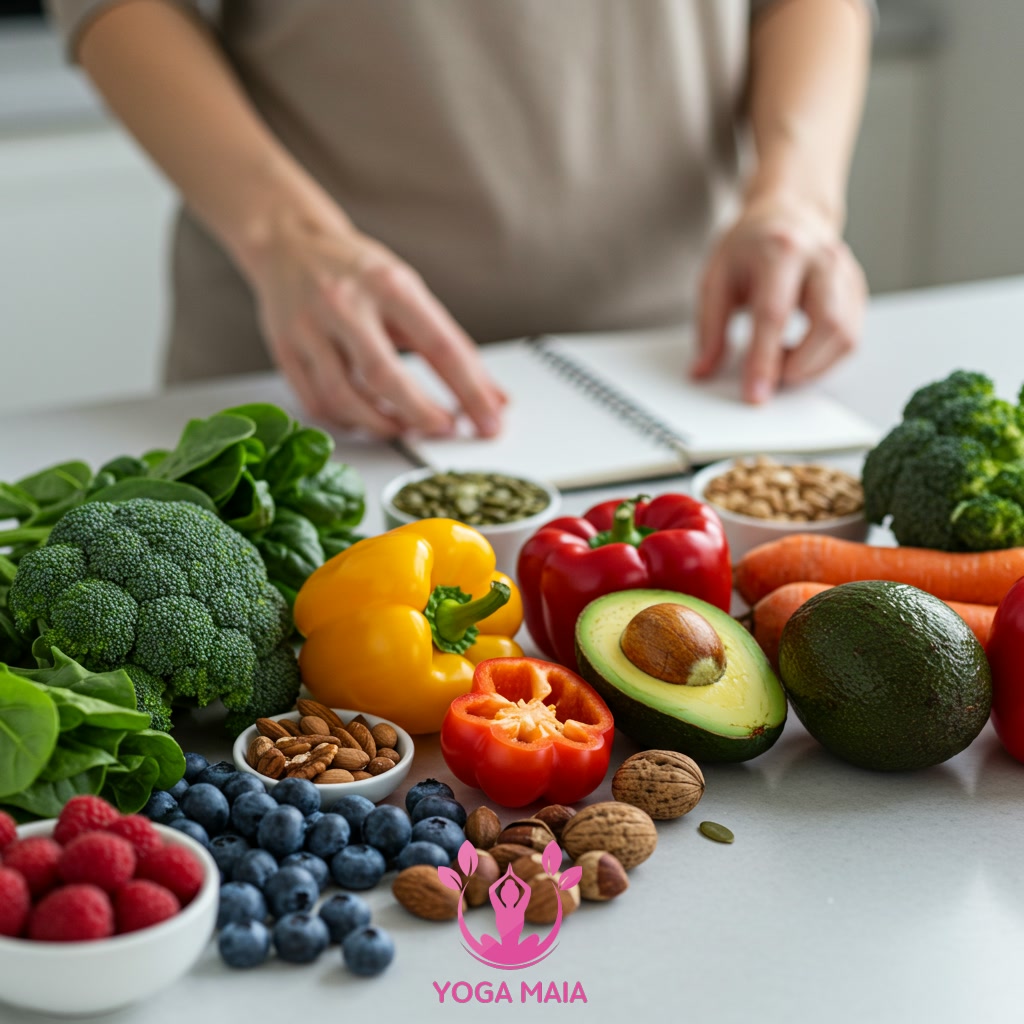 Building Your Flexibility-Focused Meal Plan for Yoga
Building Your Flexibility-Focused Meal Plan for Yoga












